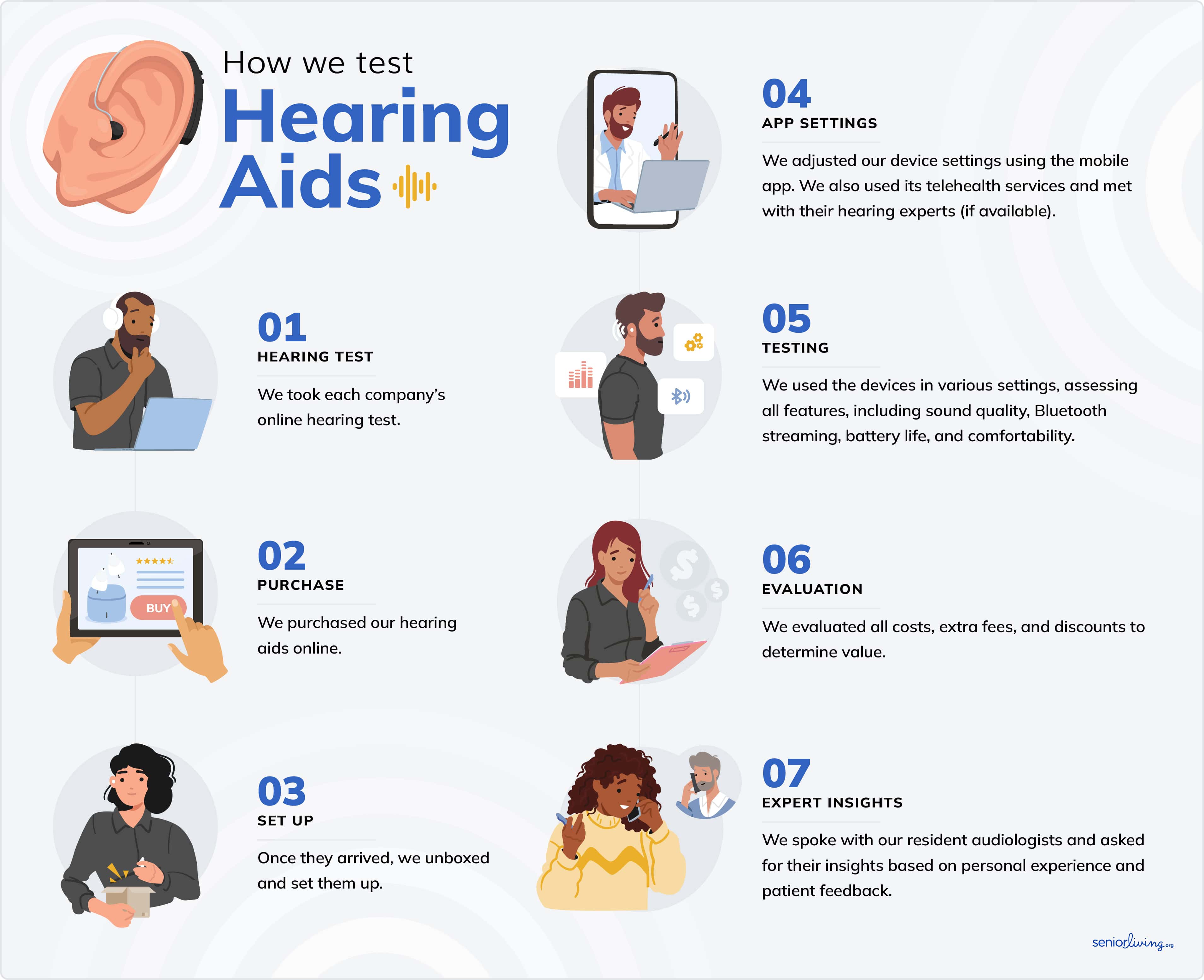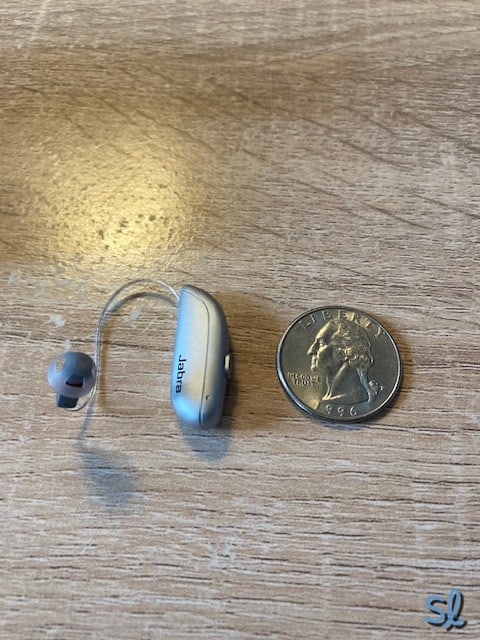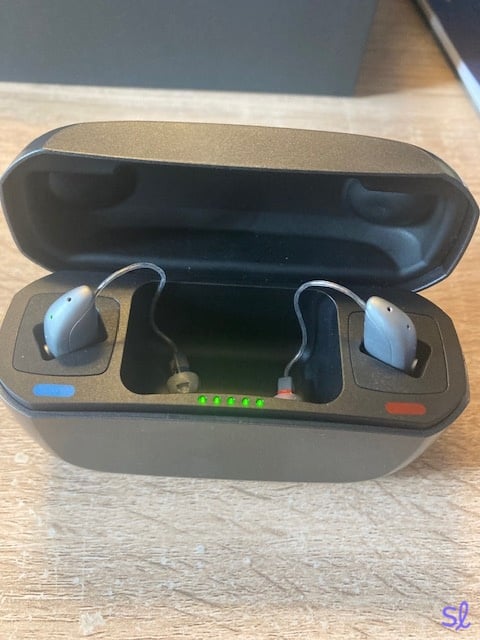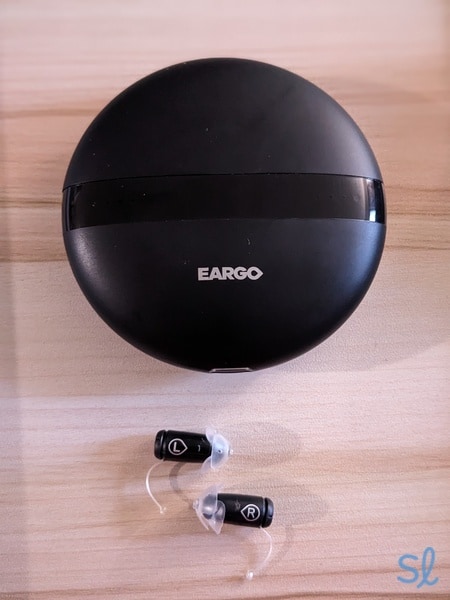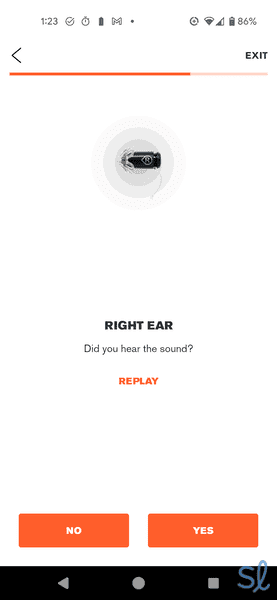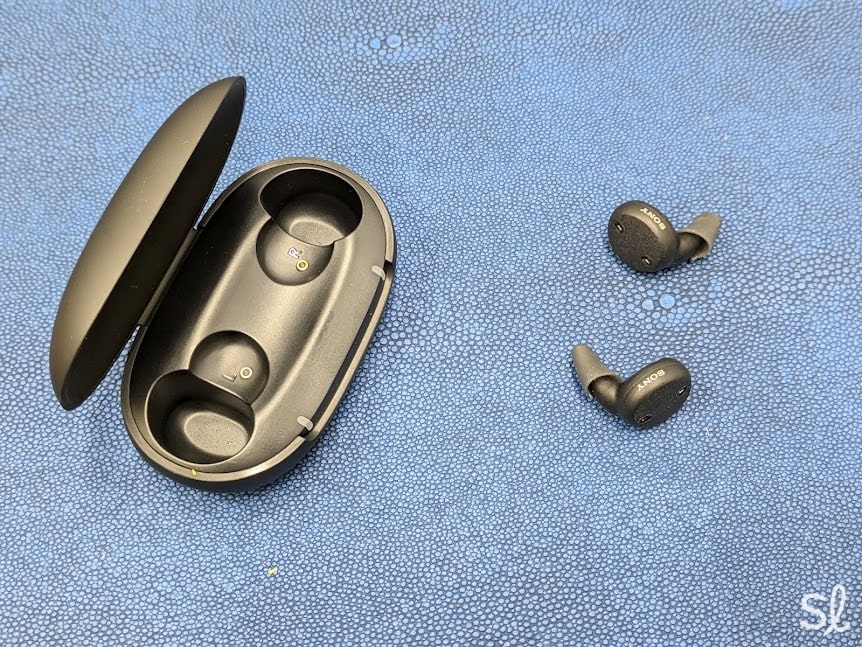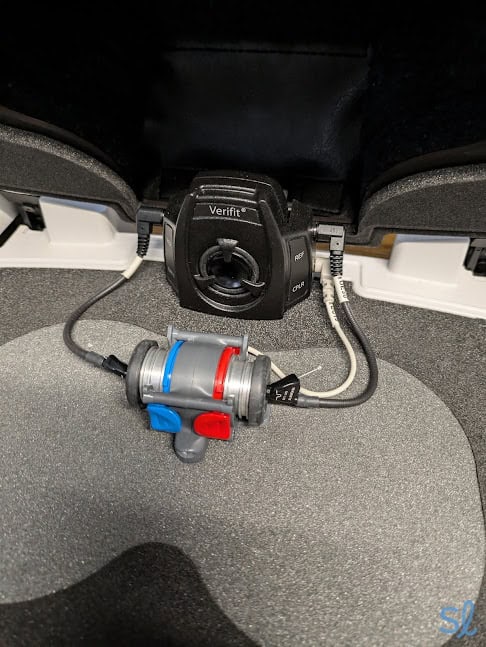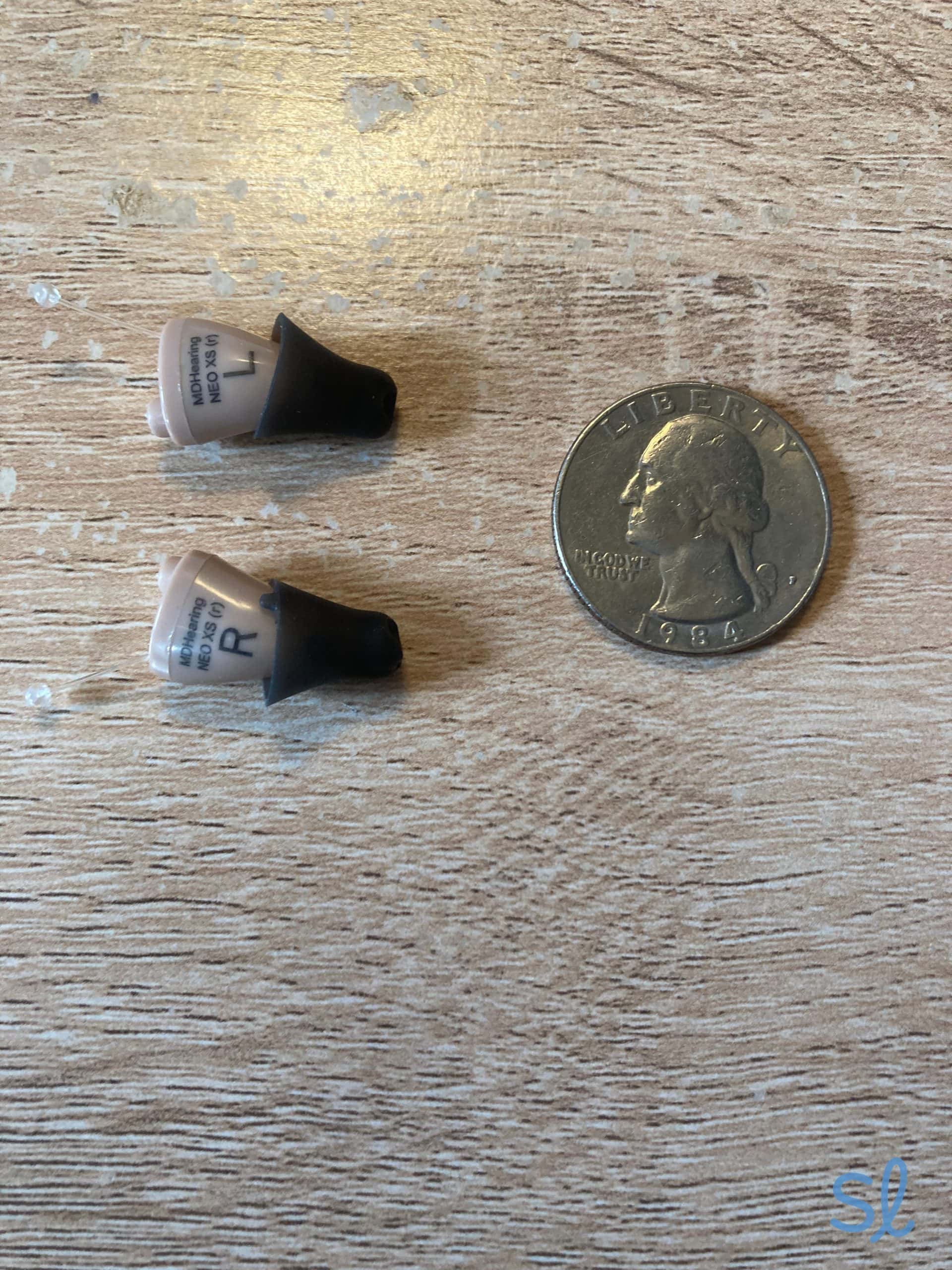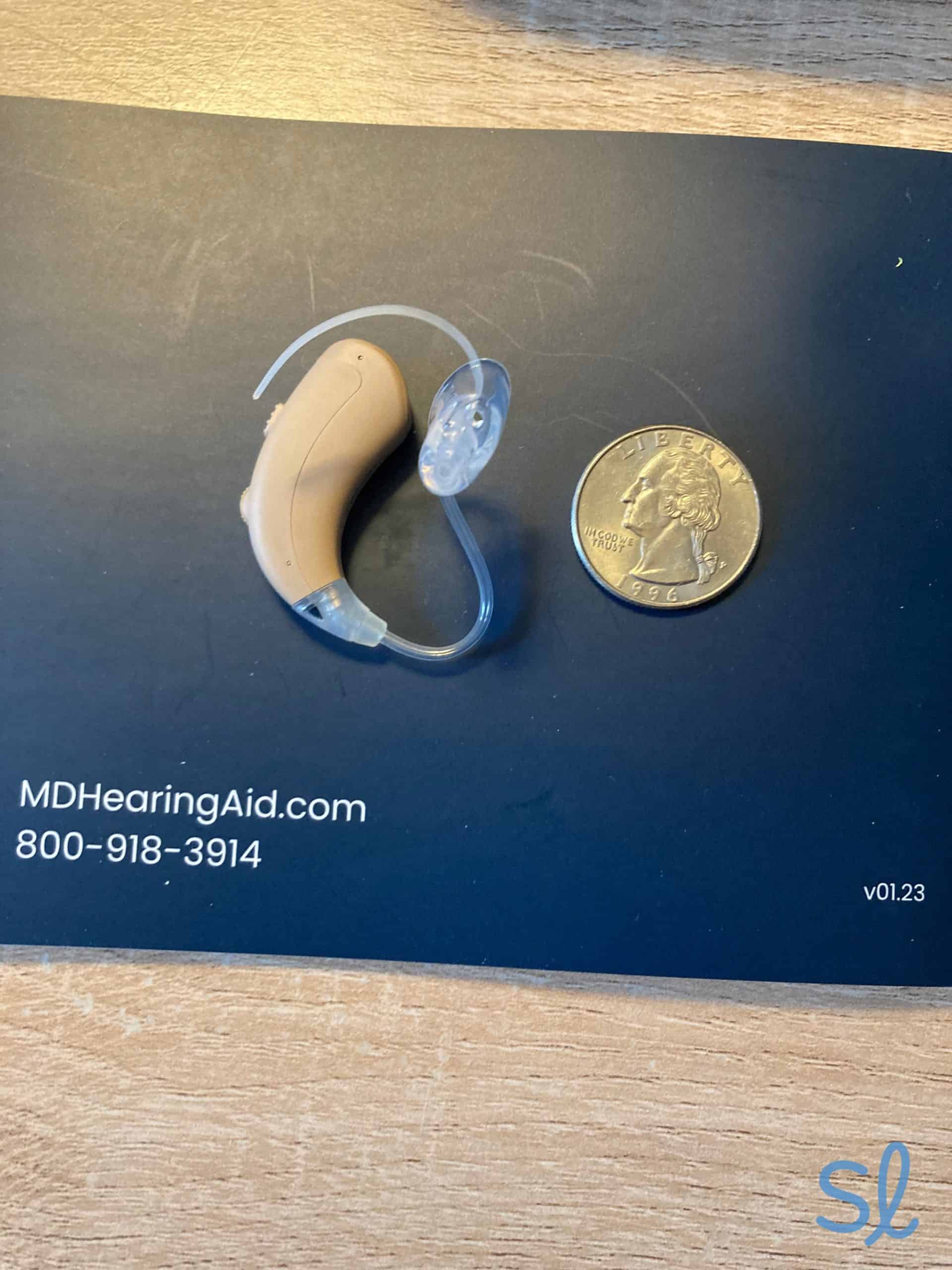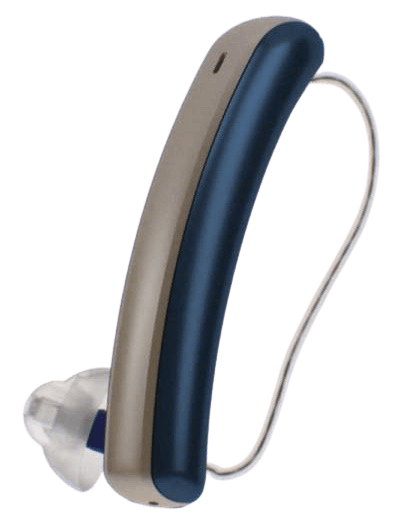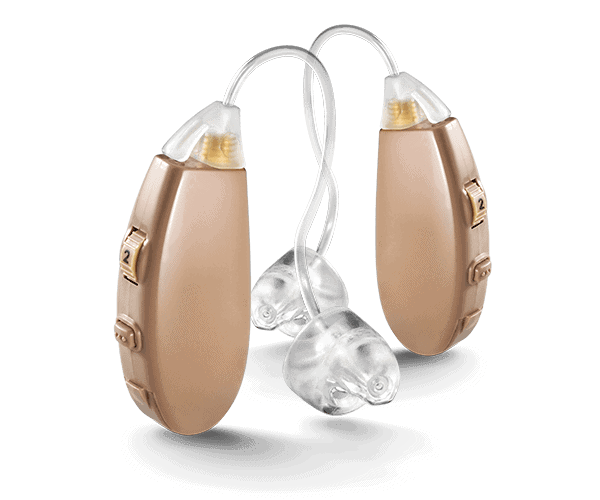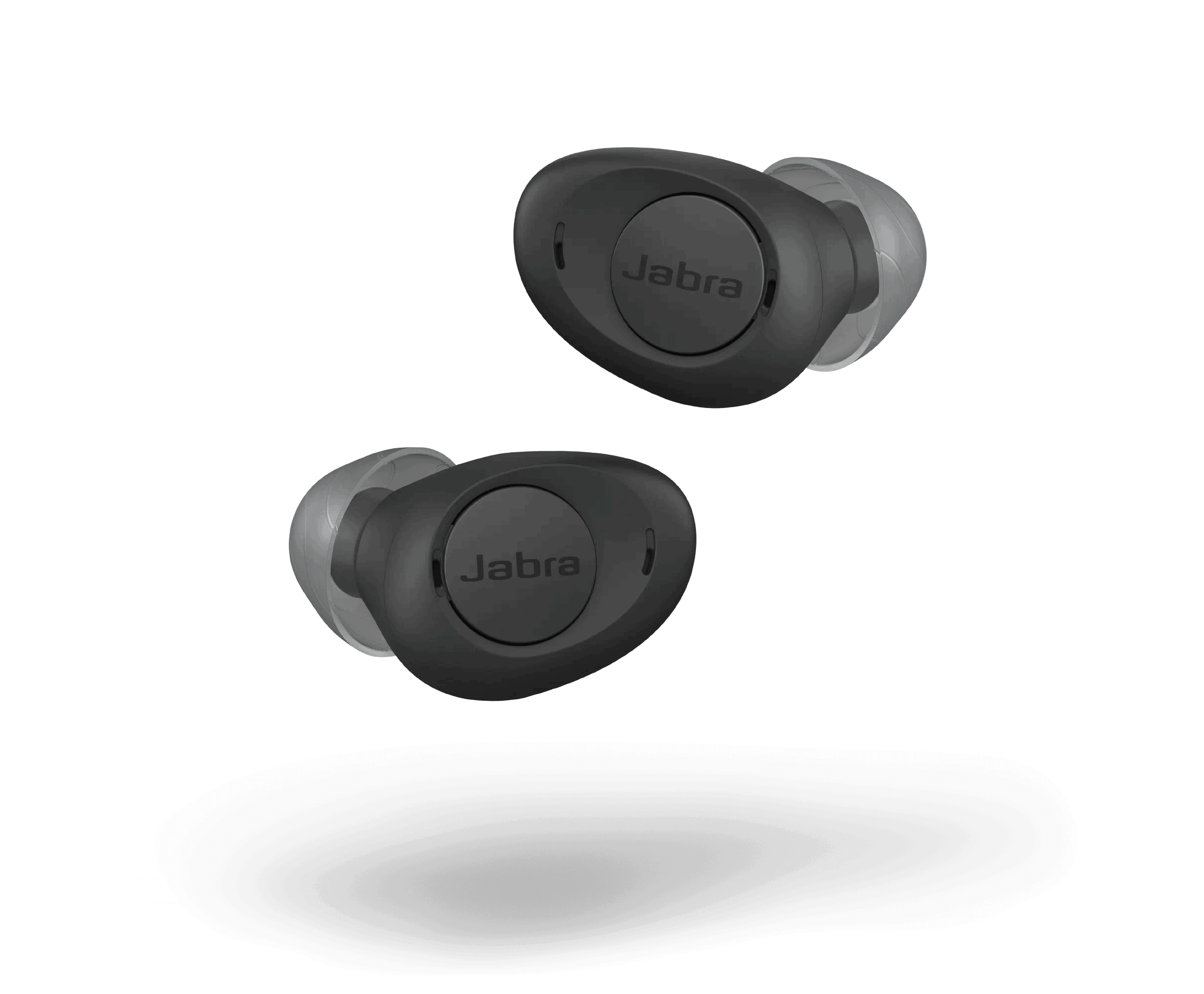Best Over-the-Counter Hearing Aids
Jabra Enhance is our top choice for the best OTC hearing aids, thanks to excellent follow-up care, exceptional sound quality, and value.
Our audiologists and senior tech experts tested the best OTC hearing aids and narrowed down the list to our recommendations.
SeniorLiving.org is supported by commissions from providers listed on our site. Read our Editorial Guidelines
- Prices starting at $1,195 per pair
- Behind-the-ear hearing aids
- 100-day free trial
- Prices starting at $799 per pair
- In-ear and earbud-style hearing aids
- 45-day free trial
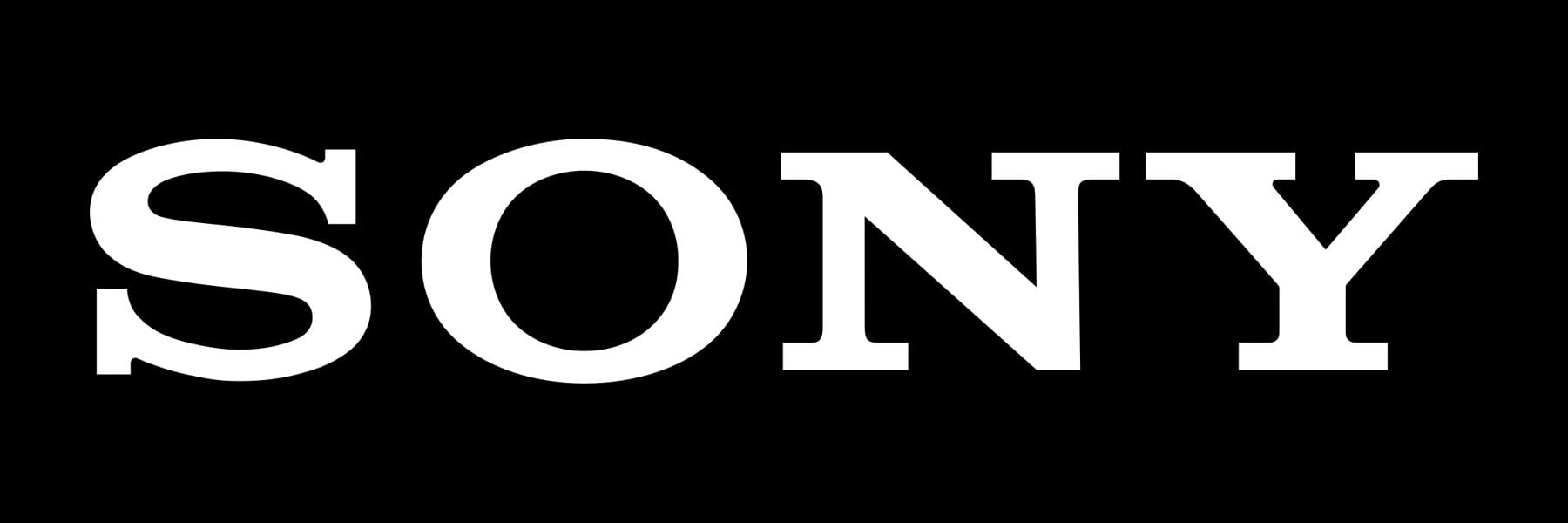
- Prices starting at $899 per pair
- In-ear and earbud-style hearing aids
- 45-day free trial
- Prices starting at $297 per pair
- Behind-the-ear and in-ear hearing aids
- 45-day free trial
Contents
Since October 17, 2022, the FDA made OTC hearing aids available directly to consumers,1 creating potential cost savings for individuals with mild to moderate hearing loss. OTC hearing aids don't require professional fitting or maintenance, ensuring Americans without access to professional hearing care can still improve their quality of life.
Our team of experts tested and reviewed a dozen OTC hearing aids, evaluating each for factors like cost, battery life, features, and remote care. We also consulted with audiologist Dr. Ruth Reisman and built this list based on her expertise. We found that Jabra Enhance offers the best value, thanks to their follow-up care, advanced features, and 100-day money-back guarantee.
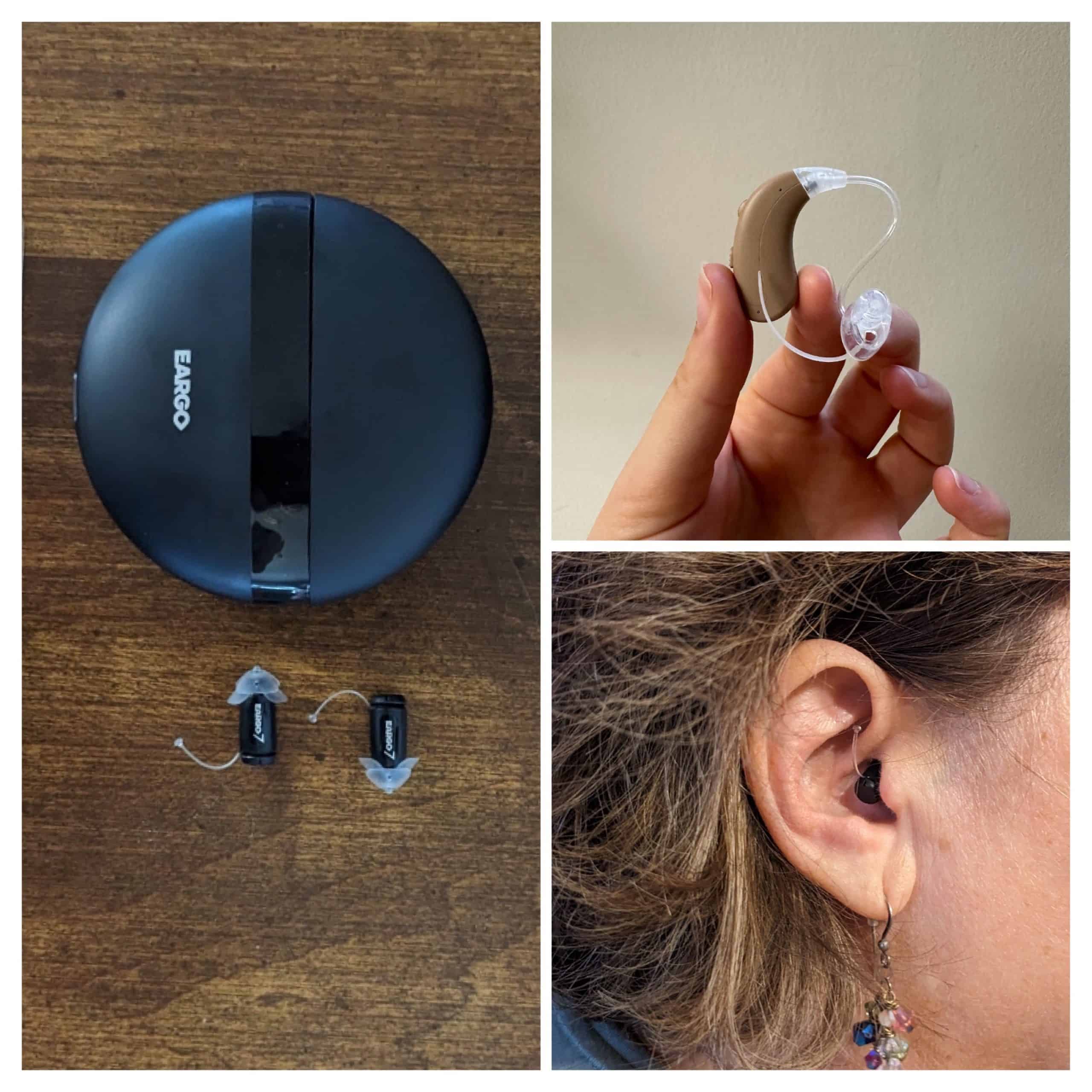
Our team testing out different hearing aids

The Best Online Hearing Aids for 2025
Our Methodology: How We Chose the Best OTC Hearing Aids
How We Tested the Hearing Aids
Our tech team conducted over 100 hours of testing to compare the top OTC hearing aids. We followed these steps to test each provider:
- We tried each brand's online hearing test, comparing our results to in-person evaluations from an audiologist.
- We selected our hearing aids and made our purchase, evaluating the overall shopping process. We considered price, value, seasonal promotions, and upfront costs.
- Once we had the devices in hand, we followed the instructions to set them up. If the brand had a mobile app, we downloaded it and completed setup. We evaluated the ease of use and the steps required to get them up and running.
- We contacted customer service multiple times to evaluate care quality by phone, mobile app (if applicable), and online chat.
- Our team tested each hearing aid for a week at home, in noisy environments, and in quiet settings. We evaluated features, sound quality, and ease of use.
We also spoke with Dr. Reisman about her expertise with each brand. We used her experience testing these hearing aids, along with feedback from her patients, to evaluate and rank them.
How We Chose the Best OTC Hearing Aids
After narrowing down the list to four OTC providers, we tested each one. Our team of tech experts and audiologists evaluated several criteria, including:
- Cost: We compared providers to find the best prices and value. Our list includes budget-friendly options starting at $297 per pair and more advanced models at $1,195 per pair.
- Functionality: We tested models from each provider to ensure they offer top-notch functionality for seniors with mild to moderate hearing loss.
- Remote care: Remote care is not offered by every OTC hearing aid provider, but many do. Some include remote follow-up care at no extra charge, while others offer it as a paid add-on. Either way, every provider on this list has some form of remote care.
- Battery life: Each provider offers hearing aids lasting 16 hours or more on one charge.
- Features: Top features include discreet designs, Bluetooth connectivity, mobile apps, and adaptive volume. Each provider offers at least one of these features; some offer all of the above.
- Warranty: These hearing aids offer manufacturer warranties ranging from one to three years.
Why Trust Us
Our team of tech experts tests the latest devices for seniors each year. We've logged hundreds of hours researching, testing, and reviewing hearing aids from dozens of providers.
Our resident audiologist, Dr. Ruth Reisman, provided feedback on each brand and essential insight into each provider. Dr. Reisman has over a decade of experience helping patients with hearing loss.
The Best OTC Hearing Aids at a Glance

Jabra Enhance
|

Eargo
|

Sony
|

MDHearing
|
|
|---|---|---|---|---|
| Rating | 4.8 | 4.5 | 4.5 | 4.4 |
| Starting price | $1,195 per pair | $799 per pair | $899 per pair | $297 per pair |
| Battery Life | Up to 24 hours | Up to 16 hours | Up to 28 hours | Up to 20 hours (up to 100 hours with charging case) |
| Battery type | Rechargeable | Rechargeable | Rechargeable and disposable | Rechargeable |
| Follow-up care | 3 years (with Premium package) | Lifetime remote support | Lifetime remote support | Lifetime remote support |
| Warranty | 3 years (with Premium package) | 1 or 2 years | 1 year | 1 year |
| Style | BTE | CIC and earbud-style | ITC and earbud-style | BTE and ITC |
-
1. Jabra Enhance - Best value
 See Pricing Links to Jabra Enhance
See Pricing Links to Jabra EnhanceWhat we like most
- Prices starting at $1,195 per pair
- Behind-the-ear hearing aids
- 100-day free trial
 Jabra EnhanceSee Pricing Links to Jabra EnhanceOverview:
Jabra EnhanceSee Pricing Links to Jabra EnhanceOverview:Jabra Enhance Select 300 hearing aids
Jabra Enhance's product lineup, pricing, features, and customer support make it a standout in the OTC hearing aid industry. The company's behind-the-ear (BTE) hearing aids offer excellent value, which is why they earned the No. 1 spot on our best hearing aids list!
Jabra Enhance offers Bluetooth-enabled hearing aids with direct streaming for Apple devices and most Android phones. Plus, you'll get noise-canceling technology, tinnitus management, and a mobile app for easy adjustments. Every Premium Jabra Enhance package comes with a three-year warranty and three years of follow-up care, so you can chat with an audiologist and make remote adjustments from home.
With free shipping and a 100-day risk-free trial, Jabra Enhance makes it easy to test their devices. Most OTC hearing aid brands, such as MDHearing and Eargo, have shorter 45-day free trial periods, so we appreciate the extended trial. The one downside is that Jabra Enhance only offers behind-the-ear (BTE) hearing aids. Consider MDHearing's NEO models if you want something more discreet.
» For Tinnitus: Best Hearing Aids for Tinnitus in 2025
Pros & Cons:Pros About Jabra Enhance
- Remote adjustments
- Direct streaming
- Three years of follow-up care
- 100-day money-back guarantee
- Affordable monthly payment plans available
- Rechargeable devices
Cons About Jabra Enhance
- Only BTE options available
- Not available as singles (only pairs)
- Basic packages no longer available
Our Hands-on Experience:Our Experience With Jabra Enhance
We tested the Enhance Select 300 and found its sound quality was better than average. The sound was crisper and richer than MDHearing's NEO XS model. There wasn't any feedback or humming, and we could fine-tune our settings in the mobile app. The rechargeable devices lasted about 30 hours, nearly twice as long as Eargo's hearing aids, perfect for all-day wear.
Charging Jabra Enhance Select 300 hearing aids
All three Jabra Enhance models provide great value. The Select 50R is the most budget-friendly option, ideal for everyday listening, but it lacks features. We recommend the Select 300 for users with active lifestyles and the Select 500 for those wanting the best sound clarity and features such as enhanced noise reduction, beneficial on windy days.
Read our Jabra Enhance review to learn more.
Expert InsightsFrom Audiologist Dr. Ruth Reisman,The clear sound quality is likely due to Jabra Enhance's hearing aids’ ability to meet research-based targets for those adults with mild to moderate hearing loss. These targets are in place to enhance audibility and enhance speech understanding for those with hearing loss.Pricing
Jabra Enhance’s hearing aid prices range from $1,195 to $1,995 per pair. They’re not the cheapest devices on our list (that honor goes to MDHearing), but they’re less expensive than other premium brands, such as Phonak and ReSound.
Jabra Enhance also offers financing starting at $39 per month, so you can still access these quality hearing aids on a budget.
» Pricing Guide: Jabra Enhance hearing aid cost and pricing
In the past, Jabra Enhance offered Basic and Premium packages for all of their hearing aids. Now, they’ve done away with the Basic packages, so all their hearing aids come with the higher costs and superior benefits of the Premium package.
All Jabra Enhance hearing aids now provide three years of follow-up care, three years of loss and damage protection, and hearing aids customized to your needs. During testing, we spoke with an audiologist who answered our questions and helped us adjust our settings and equipment.
Expert InsightsFrom Audiologist Dr. Ruth Reisman,Jabra devices provide an array of benefits, including tinnitus management and hearing-loss treatment. With superior sound quality, seamless connectivity, innovative design, advanced noise cancellation, and versatile applications, Jabra consistently delivers exceptional audio solutions; they enhance productivity, entertainment, and communication clarity. -
2. Eargo - Most discreet
 See Pricing Links to Eargo
See Pricing Links to EargoWhat we like most
- Prices starting at $799 per pair
- In-ear and earbud-style hearing aids
- 45-day free trial
 EargoSee Pricing Links to EargoOverview:
EargoSee Pricing Links to EargoOverview:Testing out Eargo 7 hearing aids
Eargo designs its hearing aids with discretion in mind. The company offers three completely-in-canal (CIC) models for mild to moderate hearing loss, plus a unique earbud-style hearing aid. Eargo earned high marks on our best invisible hearing aids list. CIC hearing aids offer high cosmetic appeal, since they’re small and nearly invisible.
All four of Eargo's models are rechargeable, and the Eargo 8 stands out for its discreet design and sound-customization options. Packed with features like automatic sound adjustment, noise reduction, and voice and tone indicators, the Eargo 8 offers top-notch tech.
Did You Know? Active military members and veterans can save 20 percent on the Eargo 8 and up to 10 percent on the Eargo SE.
After purchasing your Eargo hearing aids online or by phone, you'll receive a personalized consultation from a licensed hearing professional via phone, text, email, or video chat. This makes it easy to get your questions answered or adjust your hearing aids.
» Our Full Review: Eargo hearing aid review
Pros & Cons:Pros About Eargo
- Small, discreet design
- Rechargeable devices
- Lifetime support from licensed hearing professionals
- One- to two-year warranties
- Remote adjustments
- Easy returns and 45-day return policy
Cons About Eargo
- Must purchase in pairs
- Cannot stream sound directly into hearing aids
- LINK by Eargo no longer available online
Our Hands-on Experience:Our Experience With Eargo
We've tested Eargo's in-ear models: Eargo 8, as well as their discontinued predecessors, Eargo 6 and Eargo 7. One of the first things we noticed was that they may be uncomfortable for smaller ears, so keep that in mind.
Other than that, we had a great experience with their devices and found the sound quality superb for an OTC hearing aid. The hearing aids automatically adjusted to different environments, which was one of our favorite features.
Expert InsightsFrom Audiologist Dr. Ruth Reisman,Eargo hearing aids are certainly an innovation in the hearing aid arena. Their unique design, features, and customer-service model have allowed for true evolution in the fitting of direct-to-consumer hearing aids.Like MDHearing, Eargo offers a mobile app. We self-fit our Eargo 8s using the Sound Match hearing test, which took about 20 minutes. The test customizes the hearing aid settings to your needs. We noticed the hearing aids were more effective after using Sound Match.
If we were unsatisfied with the mobile hearing test results, we could arrange a telehealth-style meeting with an audiologist for a more comprehensive evaluation. We appreciated having both options, especially using the app to have an audiologist remotely adjust the hearing aids.
We took Eargo's Sound Match test, which adjusts your hearing aids to your unique needs and hearing loss.
Pricing
Eargo's hearing aids range from $799 to $2,699 per pair, making their high-end models the most expensive on our list. Eargo offers more budget-friendly models like the LINK by Eargo and Eargo SE.
It’s important to note, however, that the LINK by Eargo (their only hearing aid under $1,000 per pair) is no longer available to purchase online. You’ll have to call Eargo directly and order them by phone.
Like Jabra Enhance, you don't have the option to buy single devices. Fortunately, Eargo offers financing terms for 12 to 24 months to make its hearing aids more affordable. The company also runs frequent sales for a few hundred dollars off a pair, so keep your eyes peeled!
» Pricing Guide: Eargo Hearing Aid Cost and Pricing
-
3. Sony - Best Speech Recognition

What we like most
- Prices starting at $899 per pair
- In-ear and earbud-style hearing aids
- 45-day free trial
Overview:Testing out Sony s CRE-E10 hearing aids
Sony is one of the most trusted names in the tech industry. In 2022, the company started making OTC hearing aids with the CRE-C10 (now the rechargeable C20) and rechargeable CRE-E10 models. With either model, setup and audio settings are managed through the Sony Hearing Control App. You'll need an iPhone or Android smartphone with the app installed to use them. Just keep in mind that to use the E10's Bluetooth connectivity, you must use an iOS device—it's the only compatible operating system. That's why we believe the E10 is a better option for iPhone users.
Pro Tip: Looking for made-for-iPhone (MFI) hearing aids? Check out our list of the best hearing aids for iPhones!
The C20 is a nearly invisible in-canal hearing aid that offers excellent sound quality at a lower cost than Eargo's mid-tier models. Both the C20 and E10 use rechargeable batteries that last a little over one day on a single charge. While they cost $100 less, the E10s are Bluetooth-ready, earbud-style hearing aids that offer more value (albeit less discretion).
Both models’ noise reduction technology and automatic sound adjustment tools make recognizing and understanding speech easier, even in noisy or changing environments. Like Eargo, Sony offers the option to schedule a consultation with a hearing aid expert to help you get your C20s or E10s set up properly. This might be helpful, as even a minor error during in-app setup could mean starting over, as some customers have noted.
» Also Check Out: A guide to dementia care
Pros & Cons:Pros About Sony
- Excellent sound quality and speech recognition
- Small, discreet designs
- Customization options in the Sony Hearing Control App
- Rechargeable models
- 45-day trial period
- One-on-one consultations with hearing aid experts
Cons About Sony
- Only two models to choose from
- No longer offers disposable battery options
- Setup might be complicated for less tech-savvy seniors
- iPhone or Android smartphone required (iOS 15 or higher; Android 11 or higher)
Our Hands-on Experience:Our Experience With Sony
After performing a study in her university lab, Dr. Reisman found that Sony offers some of the best OTC hearing aids on the market.
From her experience, she notes, “Sony OTC hearing aids are a great in-ear option for patients with mild to moderate hearing loss. You can customize both options to your hearing levels using the smartphone application. If you need extra support in noisy environments, the E10 offers the ability to adjust the directional microphones to enhance the speaker's voice over the background noise. The Bluetooth feature allows for direct streaming from your smartphone. If your biggest concern is discretion, the C20 is the way to go, as most patients find that it just looks like a shadow in the ear. But look to the E10 as a more affordable option.”
Dr. Reisman testing the sound quality of Sony s CRE-C10 hearing aids
Pricing
Sony C20 hearing aids cost $999, and the E10 model is $899. They can't compete with MDHearing's prices, but they're comparable to Eargo and cheaper than Jabra Enhance. We believe Sony's hearing aids offer a good middle ground for individuals willing to spend more on discreet hearing aids with enhanced speech recognition technology without spending over $1,000 per pair.
-
4. MDHearing - Most Affordable
See Pricing Links to MDHearingWhat we like most
- Prices starting at $297 per pair
- Behind-the-ear and in-ear hearing aids
- 45-day free trial
MDHearingSee Pricing Links to MDHearingOverview:Testing out the Neo XS from MDHearing
MDHearing offers several OTC hearing aids for mild to moderate hearing loss. It offers more style options than Jabra Enhance, including BTE and in-the-ear (ITE) hearing aids with features like noise reduction and feedback cancellation.
MDHearing stands out for its affordable prices. Its devices start at just $297 per pair, making it the cheapest company on our list. MDHearing's hearing instrument specialists will guide you through setup and customization. Plus, every hearing aid has free shipping and a 45-day trial, so there's no risk in testing them out.
MDHearing's most popular model is the VOLT. The rechargeable BTE hearing aid is equipped with a powerful battery. A full charge lasts up to 20 hours, which is great, but a few hours less than comparable models from Jabra Enhance. When your MDHearing devices need charging, simply pop them onto the magnetic charger. Check out our guide to the best rechargeable hearing aids to compare MDHearing to other providers.
Pros & Cons:Pros About MDHearing
- Competitive prices on most models
- ITE and BTE models
- 45-day risk-free trial
- Free U.S.-based lifetime support available 24/7
- Devices available as singles and in pairs
- 12-month financing available
Cons About MDHearing
- One color option
- Only has a one-year warranty
Our Hands-on Experience:Our Experience With MDHearing
We tested MDHearing's NEO XS and VOLT models. We were impressed with the feedback cancellation and noise reduction, especially considering their size and pricing.
The VOLT features more advanced features like smart sound reduction and dual microphones. The NEO XS is more discreet, thanks to its in-ear design. MDHearing's devices don't offer the same advanced audio programming as Jabra Enhance, but they offer sleek designs at lower prices.
Testing out MDHearing's VOLT devices, which are small and sit behind the ear.
We liked that, unlike Eargo, MDHearing makes it possible to adjust settings without using a smartphone. The downside is that MDHearing doesn't have a mobile app, so you'll only have the option to change settings and volume on the device itself.
MDHearing offers follow-up care via phone, email, and online chat, but Dr. Reisman notes that some patients have had difficulty finding support, especially outside the U.S.
In our experience, we always got our questions answered quickly using MDHearing's online chat feature. Read our full MDHearing review to learn more.
Expert InsightsFrom Audiologist Dr. Ruth Reisman,Of concern, some of MDHearing’s BTE models significantly surpass uncomfortable loudness levels; this can put the hearing-loss patient at significant risk for further nerve-related damage. However, the in-ear options produced results that were closer to targets and provided less risk of overamplification.Pricing
Compared to Eargo and Jabra Enhance, MDHearing offers some of the most affordable hearing aids available over the counter. MDHearing's prices range from $297 to $597 per pair, thanks to promotions. That's around $200 to $500 less than Eargo's least expensive model.
Ongoing sales can save you hundreds of dollars. Unlike Jabra Enhance, MDHearing allows you to buy a single hearing aid, but you may not get the same sale price as purchasing a pair.
» Pricing Guide: MDHearing hearing aids cost and pricing
The Runners-Up
Our top picks are not the only OTC hearing aids on the market. Below are some providers who didn't make our list but may be a good option for some users.
- Lexie: Lexie offers multiple BTE hearing aids powered by Bose, with solid customer service at affordable prices. Head over to our Lexie hearing aid review for more details.
- Otofonix: Otofonix offers several BTE models with features like directional microphones, sound environment settings, and digital sound processing. Check out our hands-on review of Otofonix to learn more.
- Lucid Hearing: Lucid Hearing offers several affordable choices ranging from $199.99 per pair for the Enrich model to $1,299.99 per pair for the premium rechargeable Tala model.
- Go Hearing: Go Hearing offers two budget-friendly OTC solutions. Priced at $299 per pair, Go Hearing's Go Prime is among the most affordable OTC hearing aids.
What Are OTC Hearing Aids?
Hearing aids can make a world of difference for people with hearing loss. Untreated hearing loss can lead to isolation and has been associated with conditions such as depression, anxiety, low self-esteem, dementia, reduced mobility, and falls.2 Check out our hearing aid buying guide to learn more.
Unfortunately, conventional hearing aids can be costly. Not everyone can afford a doctor's visit, let alone the devices. That's where OTC hearing aids come in.
OTC hearing aids are for individuals ages 18 and older with mild to moderate hearing loss. The self-fitting hearing aids don't require a hearing exam, audiologist's review, or approval from a medical practitioner, resulting in more affordable pricing. Some OTC brands offer online hearing tests and follow-up care, though it's not required.
The FDA's OTC hearing aid category aims to make hearing aids more accessible and affordable. Here are a few key considerations, since you may be responsible for:
- Determining the level of your hearing loss and your hearing needs
- Selecting and purchasing your hearing aids
- Setting up and programming your hearing aids
- Troubleshooting your hearing aids if they malfunction
In the video below, Jeff Hoyt, editor-in-chief of SeniorLiving.org, speaks with Dr. Ruth Reisman, a licensed audiologist and hearing aid dispenser, about the Over-the-Counter Hearing Aid Act and how it could help millions of Americans.
How Much Do OTC Hearing Aids Cost?
Over-the-counter hearing aids were introduced to make hearing devices more accessible to Americans. They typically cost far less than prescription hearing aids. A growing number of OTC providers has helped keep prices low.
Did You Know? High costs are one of the top reasons why roughly 20 million Americans with hearing loss have not purchased hearing aids.
You can expect to pay between $300 and $3,000 for a pair of OTC hearing aids, with most models around $1,000. That might still be pricey for some, but considering most prescription hearing aids start at $1,000 per ear (not always including fittings and appointments), OTC hearing aids are a much more affordable option.
Does Medicare Cover Over-the-Counter Hearing Aids?
No, Original Medicare does not cover hearing aids — OTC or prescription models. However, you may get some coverage through a Medicare Advantage plan with hearing benefits. These plans often cover annual hearing exams and, in some cases, partial coverage for hearing aids and related devices.
Pro Tip: Want a Medicare Advantage plan with hearing benefits? Check out our guide to the best Medicare Advantage plans to learn more!
Pros and Cons of OTC Hearing Aids
Unsure whether OTC hearing aids for mild to moderate hearing loss are right for you? Let's weigh the pros and cons.
Pros About OTC Hearing Aids
- Affordability: Former President Joe Biden's statement on hearing aid affordability noted the final FDA ruling would deliver nearly $3,000 in savings to American families for a pair of hearing aids.3 This was a game-changer for low-income seniors or individuals on fixed incomes, since hearing aid pricing is a major consideration.
- Ready availability: OTC hearing aids are available directly to consumers without waiting for a doctor's approval or fitting appointment.
- Simplicity: Some OTC hearing aids have limited features, making them viable for individuals who aren't interested in complex devices.
- Smart choice for new users: OTC hearing aids offer a quick solution to help you become familiar with your hearing needs.
Cons About OTC Hearing Aids
- Not for all levels of hearing loss: According to the FDA, OTC hearing aids are for individuals with mild to moderate hearing loss. If your hearing loss is more profound, you'll need prescription hearing aids with more functions and features.
- Not custom-fit: Brands like ReSound and Starkey offer custom hearing aids based on ear size and shape, but over-the-counter hearing aids are typically not professionally molded to your ears. This one-size-fits-all approach may result in an uncomfortable or incorrect fit.
- Quality may not meet expectations: Lower-quality OTC hearing aids may not deliver a seamless experience. OTC hearing aids don't always include assistance from an audiologist, making it challenging to troubleshoot malfunctions.
Pro Tip: Properly caring for your hearing aids is vital. Check out our guide on how to clean hearing aids.
OTC vs. Prescription Hearing Aids
The two most notable differences between over-the-counter and prescription hearing aids are price and accessibility. OTC hearing aids are typically available online and delivered to your door. There's no need to schedule an appointment with a hearing professional.
Prescription hearing aids must be acquired through a licensed prescriber. Prescription devices often cost two or three times more than OTC models and may require multiple in-person fittings or adjustments.
While this might make OTC hearing aids seem like the clear winner for those on a budget, consider several important factors first. An in-person fitting can help ensure you get the best hearing aids and have professional help to set them up. With OTC hearing aids, you can often get remote support (especially for the initial fitting), but in-person care is rarely available.
OTC hearing aids are designed for adults with mild to moderate hearing loss. So, if you have severe or profound hearing loss, you'll need prescription hearing aids. Prescription hearing aids cost more because they offer advanced features and superior performance.
Generally speaking, they offer more advanced technology for better speech recognition or more intuitive adjustments when switching between environments. Prescription hearing aids also have more customization options for your listening experience, with or without professional assistance.
Things to Keep in Mind When Purchasing an OTC Hearing Aid
Since 2022, purchasing OTC hearing aids can be as simple as stopping by your local drugstore. Shopping can be tricky, however, if you don't know what to look for. Our team put together a few critical criteria to consider as you evaluate OTC and prescription hearing aid options.
Battery Life
Whether you prefer traditional battery-powered hearing aids or a rechargeable model, your hearing aids are only as good as their battery life. No one wants their hearing aids to lose power in the middle of a conversation!
The outer packaging for all OTC hearing aids will note if the battery is rechargeable or replaceable. If the battery is replaceable, the packaging will include how many batteries are needed (and whether they are included).
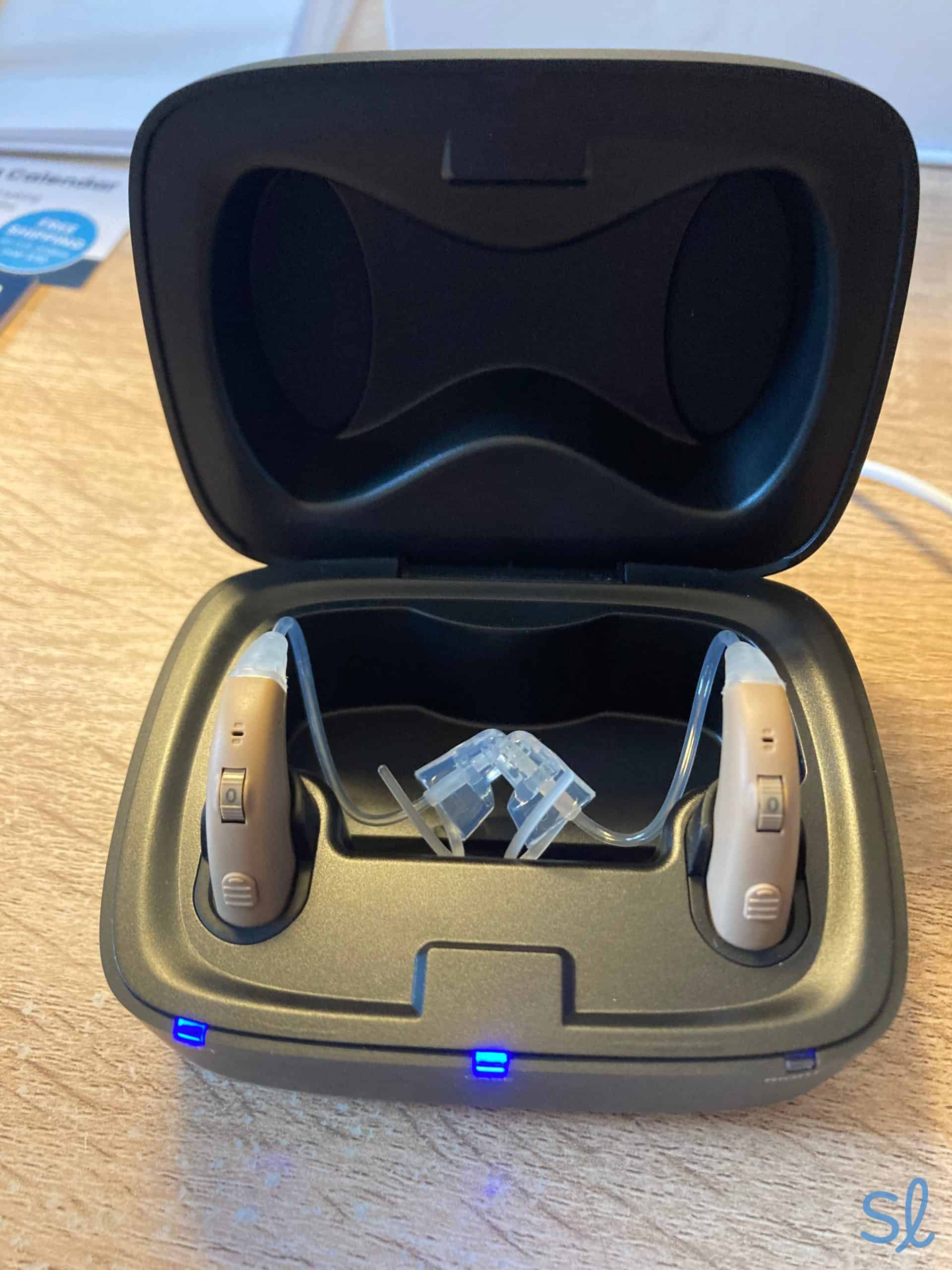
MDHearing offers rechargeable hearing aids, including the VOLT model
Return Policy
It's essential to allow yourself time to adjust to new hearing aids. That's why a generous return policy is crucial. Before purchasing, check the return policy. The policy is set by retailers and manufacturers, not the FDA. The length will vary.
Warranty
Small but mighty, hearing aids are built with tiny electrical parts. What happens if your hearing aids stop working? A solid warranty ensures the manufacturer can repair or replace your hearing aids at no additional cost within a specific time frame.
Size and Weight
You'll likely spend many hours wearing your hearing aids, so choose a lightweight device for optimal comfort. It's also critical to consider how your hearing aids will fit, feel, and look. Are you looking for discreet, practically invisible hearing aids, or would you prefer devices that are larger but easier to operate? Consider those questions as you explore your options.
Pro Tip: Wondering if you’re wearing your hearing aids correctly? We have you covered with an in-depth look at how to properly put in and remove your hearing aids.
Volume Control
All OTC hearing aids must be self-adjusting with user-adjustable volume control. This key feature allows you to tune the volume to fit your situation (e.g., louder in noisy environments, softer in quiet environments). Advanced customizations for OTC hearing aids are not required by the FDA.
Smart Device
Are you tech-savvy or do you prefer a more hands-on approach to hearing aids? Some OTC hearing aids utilize wireless technology via a smartphone or computer. You can use the device to program and adjust them. Think about what type of OTC hearing aid will work best for you, and look for those specifications on the packaging.
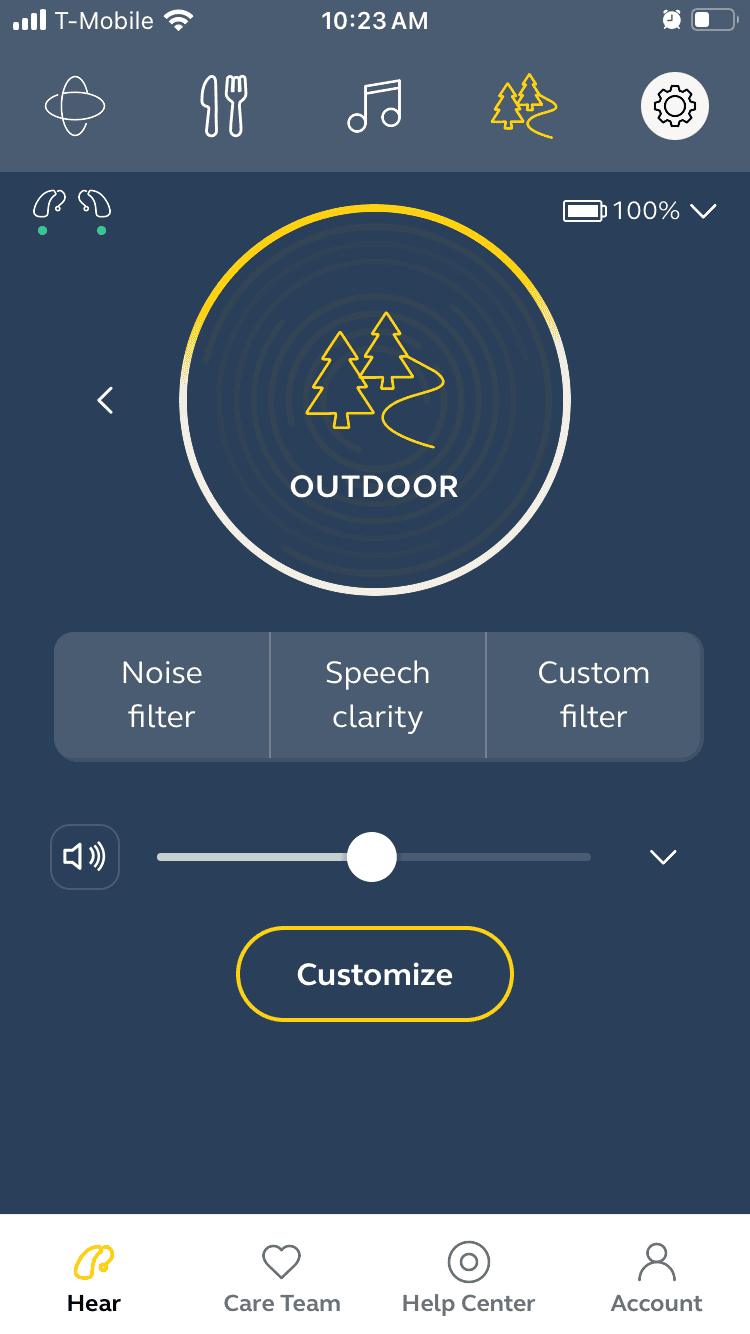
Making adjustments using the Jabra Enhance mobile app
Additional Hearing Aid Resources
Want to compare all of your options? We’ve tested and reviewed dozens of OTC and prescription hearing aids for various categories that could help you find the right fit:
FAQ
-
Are OTC hearing aids as good as prescriptions?
Prescription hearing aids often have more advanced technology than OTC hearing aids for an improved listening experience. They also have options for severe and profound hearing loss. They require in-person fittings with an audiologist, which can help personalize the devices to fit your specific needs.
-
Are OTC hearing aids just amplifiers?
No. Hearing amplifiers simply increase the loudness of all sound input. OTC hearing aids can target specific sounds like speech or music. They can be adjusted to work better in variable sound environments, such as restaurants or busy streets.
-
Are over-the-counter hearing aids effective?
Yes, OTC hearing aids can be effective for adults with mild to moderate hearing loss. Certain models can even help patients struggling with specific issues, such as tinnitus. However, if you have severe or profound hearing loss, OTC hearing aids are not an effective option.
-
Does Costco sell OTC hearing aids?
Yes, Costco sells both OTC and prescription hearing aids.
Take Our Free Online Hearing Test
Are you wondering if you have hearing loss? Grab your headphones and get a free hearing evaluation in minutes.
-
FDA. (2023). OTC Hearing Aids: What You Should Know.
-
National Institute on Deafness and Other Communication Disorders. (2022). Over-the-Counter Hearing Aids.
-
The White House. (2022). FACT SHEET: Cheaper Hearing Aids Now in Stores Thanks to Biden-Harris Administration Competition Agenda.


